For Signac, artists who are revolutionaries value social justice and artistic harmony. His works were extraordinary compositions of balanced harmony and exquisit interplays of colour. Signac was a sailor and he portrayed the energy of the tides. Through this experimentation, the innovative artist captured the spirit of the changing times. An extremely accomplished draftsman, he was well respected by the avant garde of his day.

Paul Signac the Rational, Warm Hearted Sailor
by Jo_Murphy
Paul Signac had a propensity to systematize everything within his arts based practice. That is why he was the ideal artist to be at the forefront of the Pointillist movement.
Together they loved and painted the sea
Together Signac created Pointillism with Georges Seurat.
Inspired by Turner who shared his love of the sea, Paul Victor Jules Signac captured the spontaneity and the energy of the storm and the pure restful serenity of the calmed tempest. Signac (French: [pɔl siɲak] was born on the 11 November 1863.
Classified as a French neo-impressionist painter, Signac’s early training in architecture meant that he commenced his painting career with a very detailed and finely precise understanding of the structure and mathematics of design.
When he was inspired to make the change from architecture to painting by exposure to Monet his precise mind met the sponteneity of the impressionist movement. All along the coast of Europe Signac sailed about painting seascapes, landscapes and ports of call.
Under Seurat’s influence Signac moved away from the short choppiness of impressionism and turned to a more scientifically planned method of execution.
In 1887, Van Gogh and Signac would visit Asnières-sur-Seine
They painted by the river capturing landscapes and the reverie of the cafés they visited
Pointillism is a scientific method of mixing colour optically by juxtaposing tiny coloured spots so that when grouped in a variety of ways, secondary and tertiary colours are created in the minds eye.
Signac was a sailor who travelled about by small boat visiting almost all the ports of France, Holland, and the Mediterranean. The inspired artist sketched rapidly and with highly intuitive spontaneity. The speed with which he worked meant that his preparational drawings and watercolours were vibrant, colorful energetic and alive. He then painted larger canvases back in his studio. Here he could slow down, spread out and be mathematically precise. In working this way, he was able to have the best of both worlds. He captured the majesty of the nautical land/seascapes, and then he refined his paintings by developing them through formulaic principles.
The pointillistic process was something akin to creating a mosaic. The beauty was enhanced because the work could be extremely finely detailed. Because the paintings were consummated with a fluid medium, the effect was softened and a translucent effect was achieved. Many of the works have a breathtaking peaceful aura about them.
Signac worked with oils, watercolors, etchings, lithographs, and when working with pen and ink he laboriously executed pointillist sketches. Signac inspired Henri Matisse and André Derain and this modeling in turn influenced Fauvism.
Dynamic tension created by an interplay of horizontal and oblique lines
Pure harmony created by the use of a limited palette
Want as Signac was to studying precise mathematical formulae, his colour combinations were also rationally inspired. Road to Gennevilliers is a simple yet striking analogous colour composition that evokes peaceful feelings in the viewer. The sparseness and restful linear work accentuate the calmness of atmosphere.
Using colour to build sculptural form
Look at the darker blue that throws the yellows of the The Pink Cloud forward. This use of colours from opposite sides of the colour wheel enables modeling of the clouds into a sculptural form. There is nothing wishy washy about this painting. It is solid, energetic and dynamic. And yet, there is a peaceful harmony created by the placement of shapes within the composition. Horizontal lines on the horizon work with the complimentary nature of green and pink to evoke the peaceful, settled feeling of the sun slowly sinking at the end of a nautical day.
Contraposition
Using triangles to create tension through counter balance
Look at the tilt on the two main boats that act as subject matter in this painting. Their directional lines act to counter balance each other. This counter balanced feeling is offset by the perpendicular lines of the building toward the centre of the painting. There is a solid horizontal line that 'grounds' the dynamic tension.
The red of the sails brings focus to the composition, while inciting an energetic enthusiasm which permeates the painting. The greys again act as a counterbalance, while the reflections add a touch of sophistication.
You might also like
Understanding The Persistence of Memory by Salvador DaliDali's work was prophetic. Scientists still struggle to explain the concept...
Suzanne Valadon - "The Blue Chamber"Suzanne Valadon was a Fench circus performer, artist's model, waitress and si...
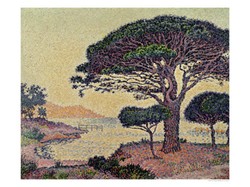

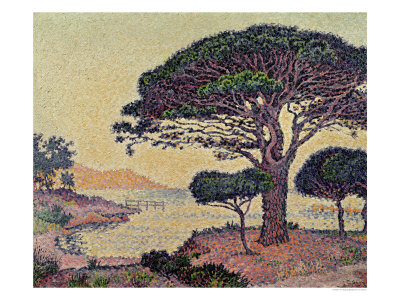
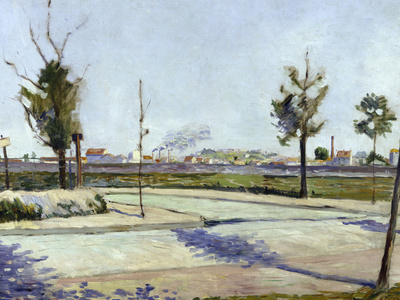
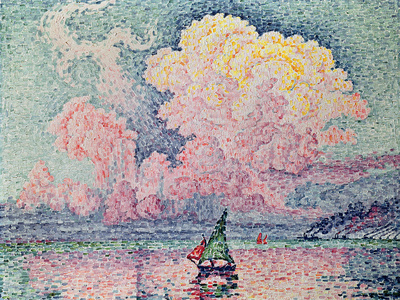



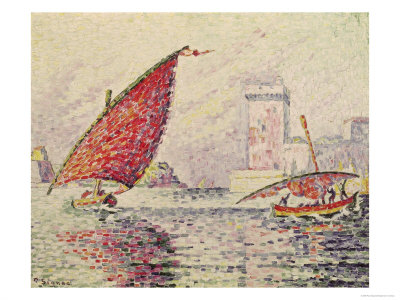

 As We Age - We React to Life's Challenges Differentlyon 03/16/2024
As We Age - We React to Life's Challenges Differentlyon 03/16/2024
 Organic Gardening - Cunnamulla Styleon 03/08/2024
Organic Gardening - Cunnamulla Styleon 03/08/2024
 Cunnamulla - Premium Destination Outbackon 12/17/2023
Cunnamulla - Premium Destination Outbackon 12/17/2023
 OpenAI and Watermarkson 02/06/2024
OpenAI and Watermarkson 02/06/2024

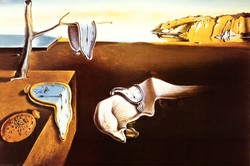

Comments
https://render.fineartamerica.com/ima...
OK You have given me an idea for a painting. (Yet again). I would like to paint an image like this during the River Lights Festival. Capture an image of what we do on the banks beneath the Hot Springs.
Any way this is my favourite painting.
I haven't thought about it, but since you have asked keep your eyes peeled.
The last sentence to your introduction advises us that "An extremely accomplished draftsman, he was well respected by the avant garde of his day."
Is it known how status-quo -- ;-D -- art appreciators, art dealers, artists perceived Paul Signac?
Your first subheading devotes itself to pointillists Seurat and Signac.
Do you have favorite Seurat artworks?
Pointillism appears to demand such muscle-controlled fingers and such patience.
Impressionist techniques convey a different, more large-scale, smoother application, at least to the non-artist.
So it's interesting that Paul Signac managed neo-impressionism and pointillism.
Might you or you and your AI -- ;-D -- have produced any pointillist masterpieces?
I’ll get on to this and come back
Leviathan with Johnny Lee Miller and Six Paintings, One Frame with Jay Hernandez, as I mentioned below, are among my favorite episodes from the respective Elementary and Magnum PI series.
They also are among my favorite all-time television-series episodes.
Perhaps you can tell me the artists -- such as the first one, with a woman with stockings in Six Paintings, and the possible Rousseau in Leviathan -- whom I did not recognize!
DerdriuMarriner Guess what? This gives me something to do over the holidays. I will work all of this out
https://magnumpi.fandom.com/wiki/Six_...
Did you all in the Land Down Under follow Jay Hernandez in the Magnum series and Johnny Lee Miller in the Elementary series?
One of my favorite episodes, Six Paintings, One Frame, with the Hernandez series includes Konstantin Somov's Lady in Blue. One of my favorite episodes, Leviathan, with Johnny Lee Miller involves Pietá by Van Gogh and Women at the Well by Paul Signac.
The Signac was on the left when Johnny Lee Miller as Sherlock Holmes entered the room to find the Pietá -- none the worse for wear -- under another painting.
Perhaps the next-best experience to viewing the above-mentioned paintings in actuality would be viewing them -- even as the Signac colors are quite light pastels that nevertheless hold their own against more dramatic colors there by such artists as Edward Hopper and Henri Rousseau -- on the Hernandez- and Miller-interpreted episodes.
Hi Kathleen, Thanks for the reading - artists had a hard life back then, Jo